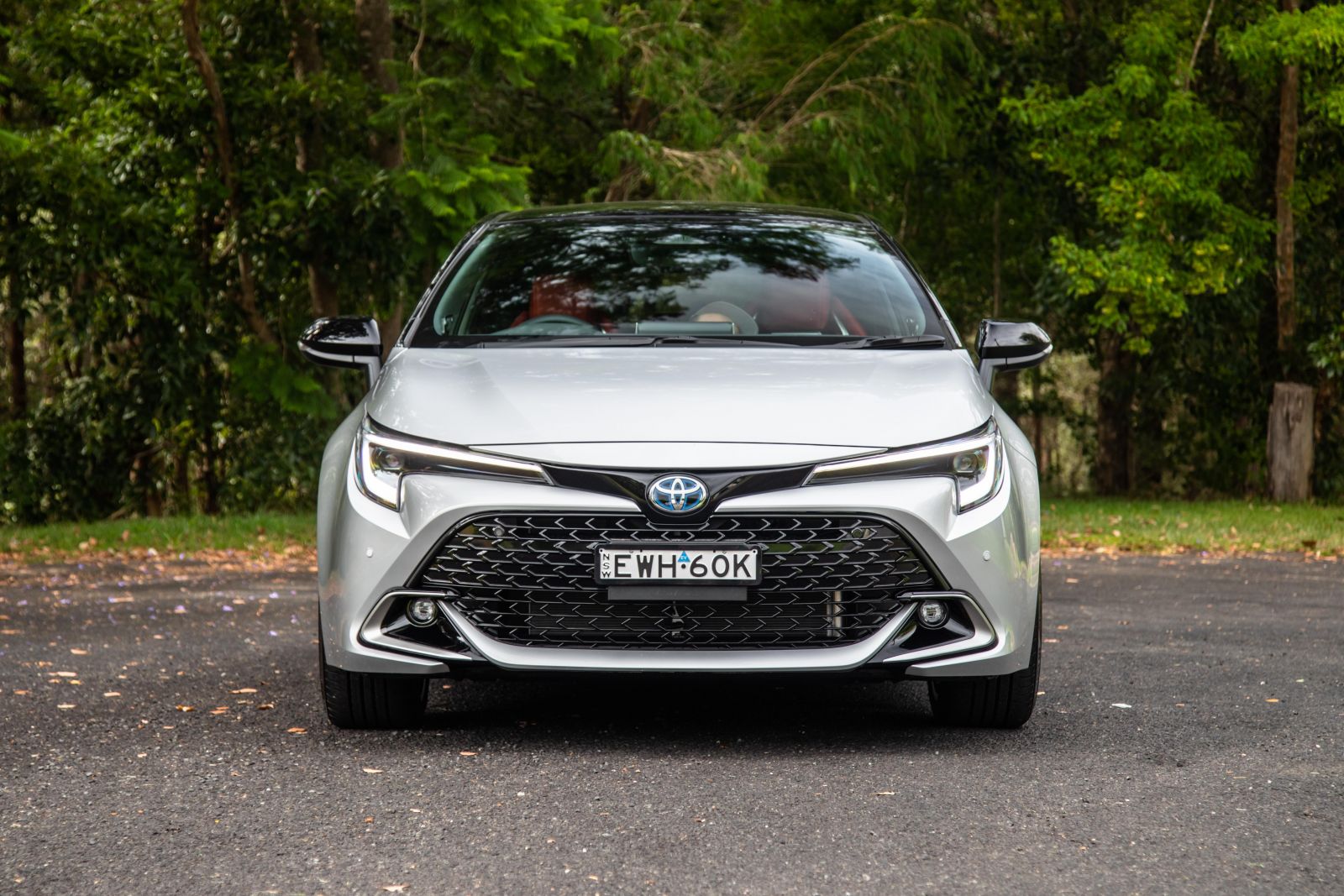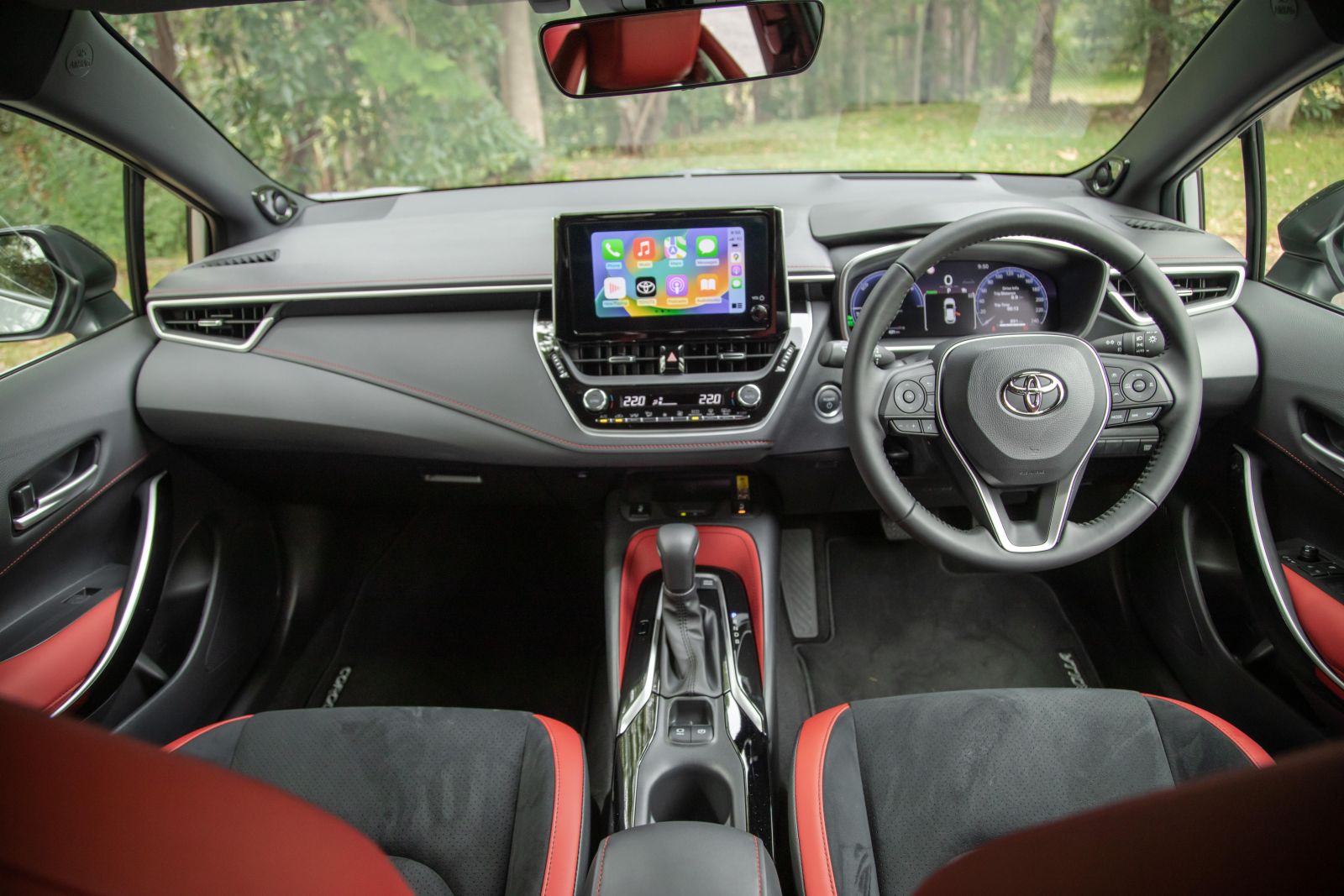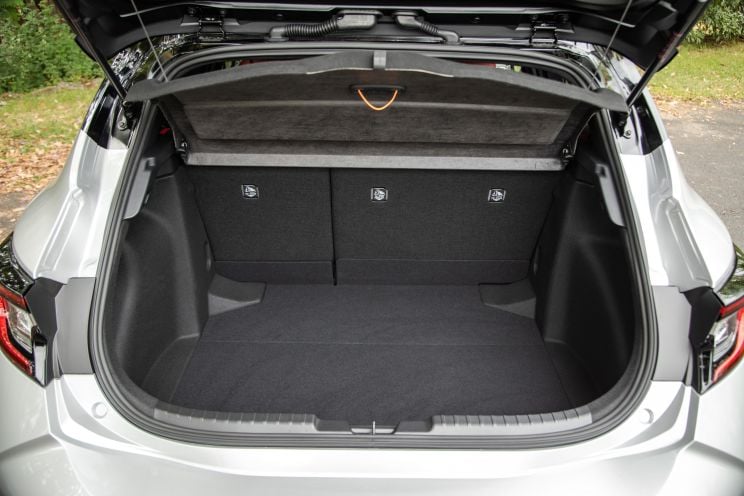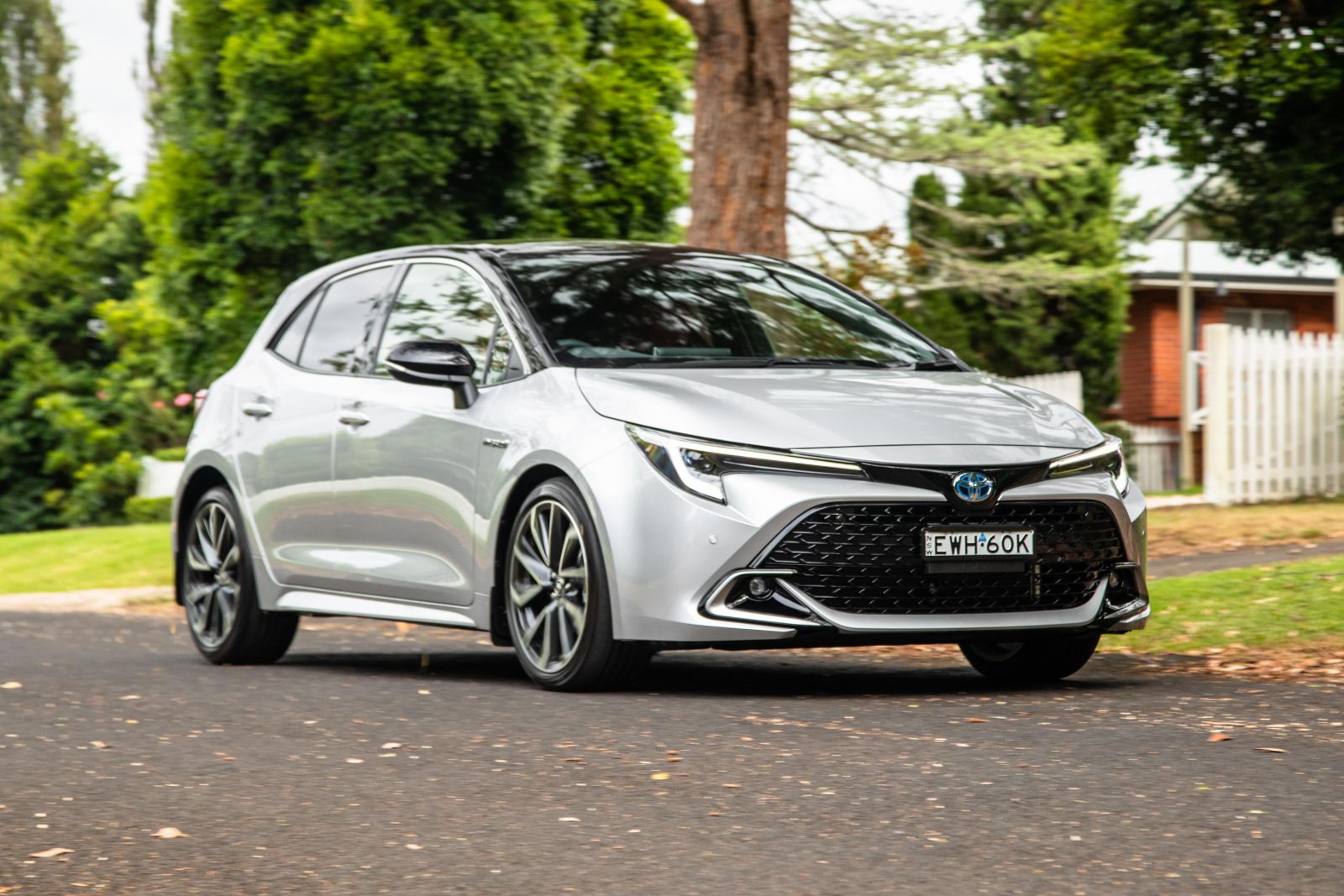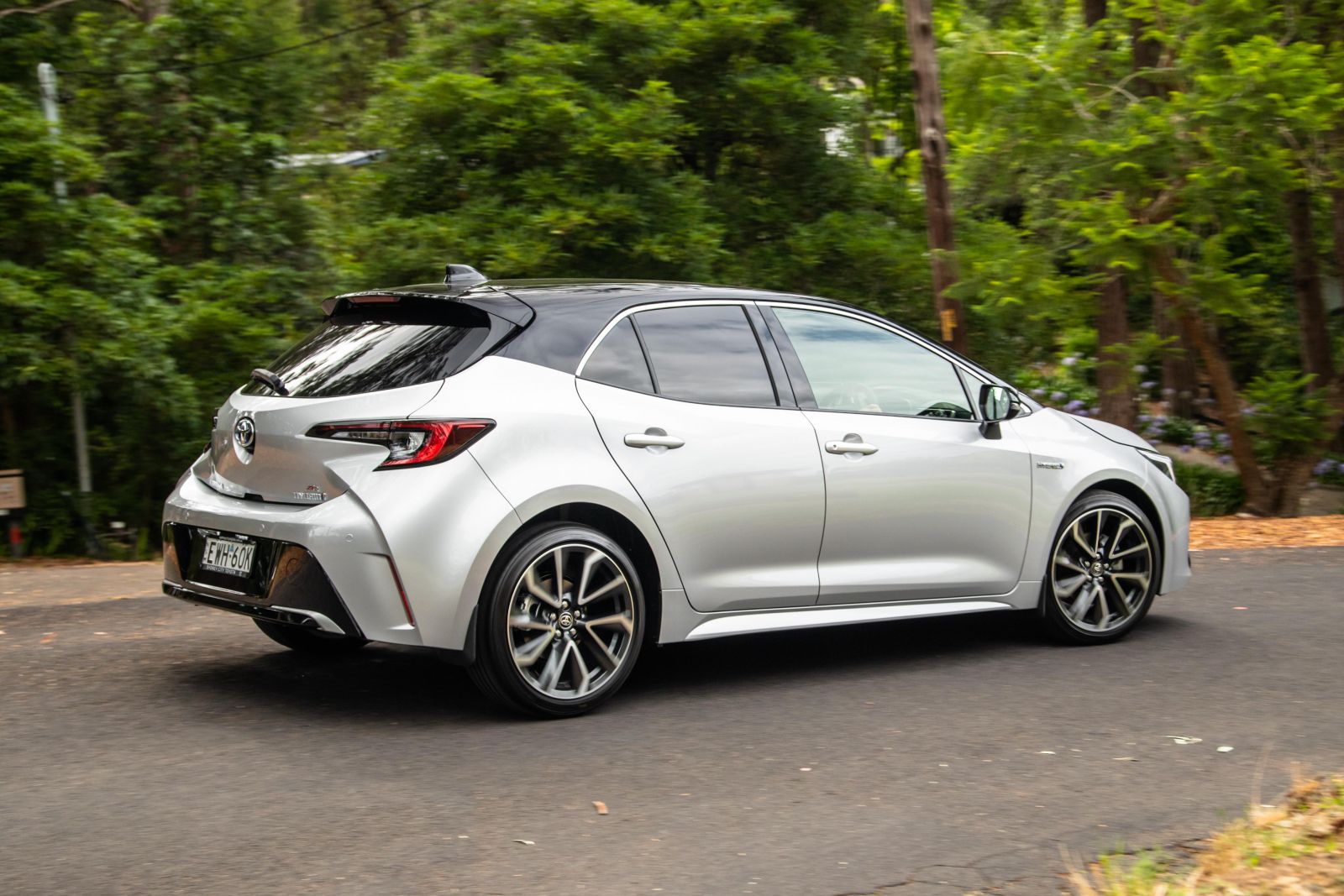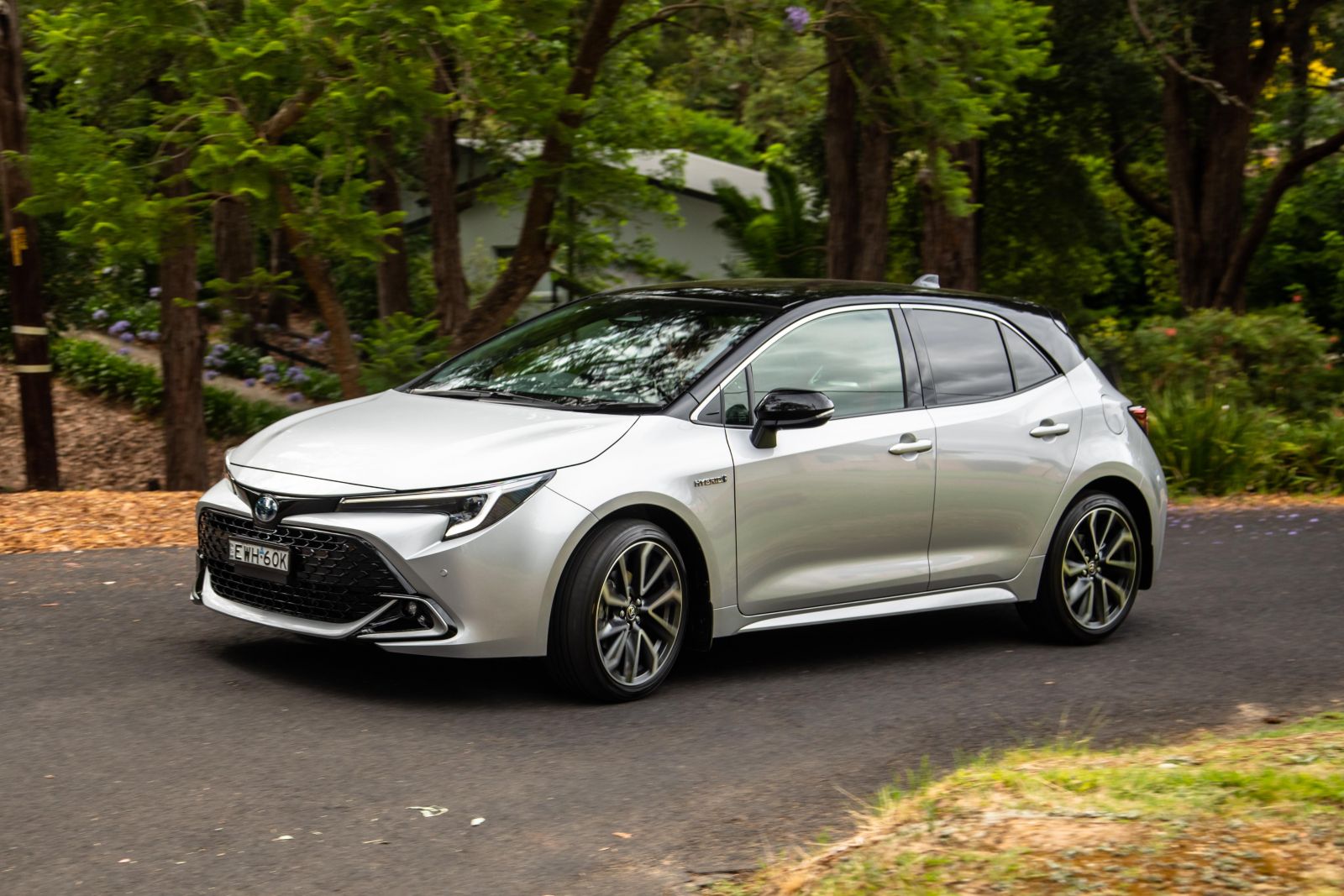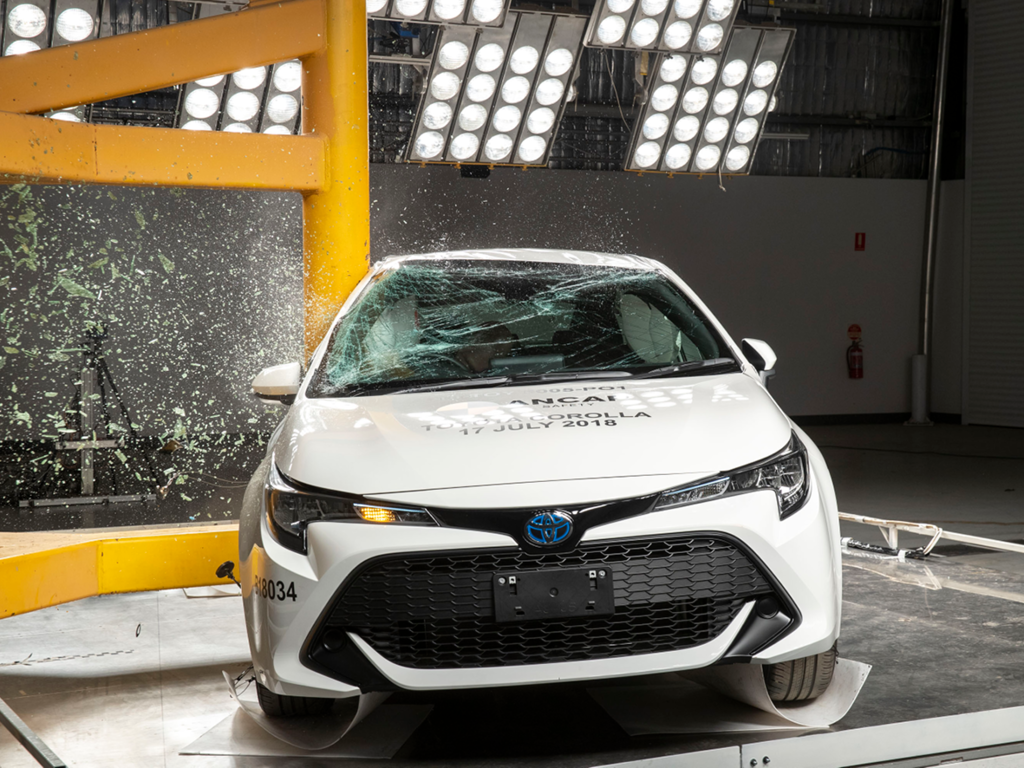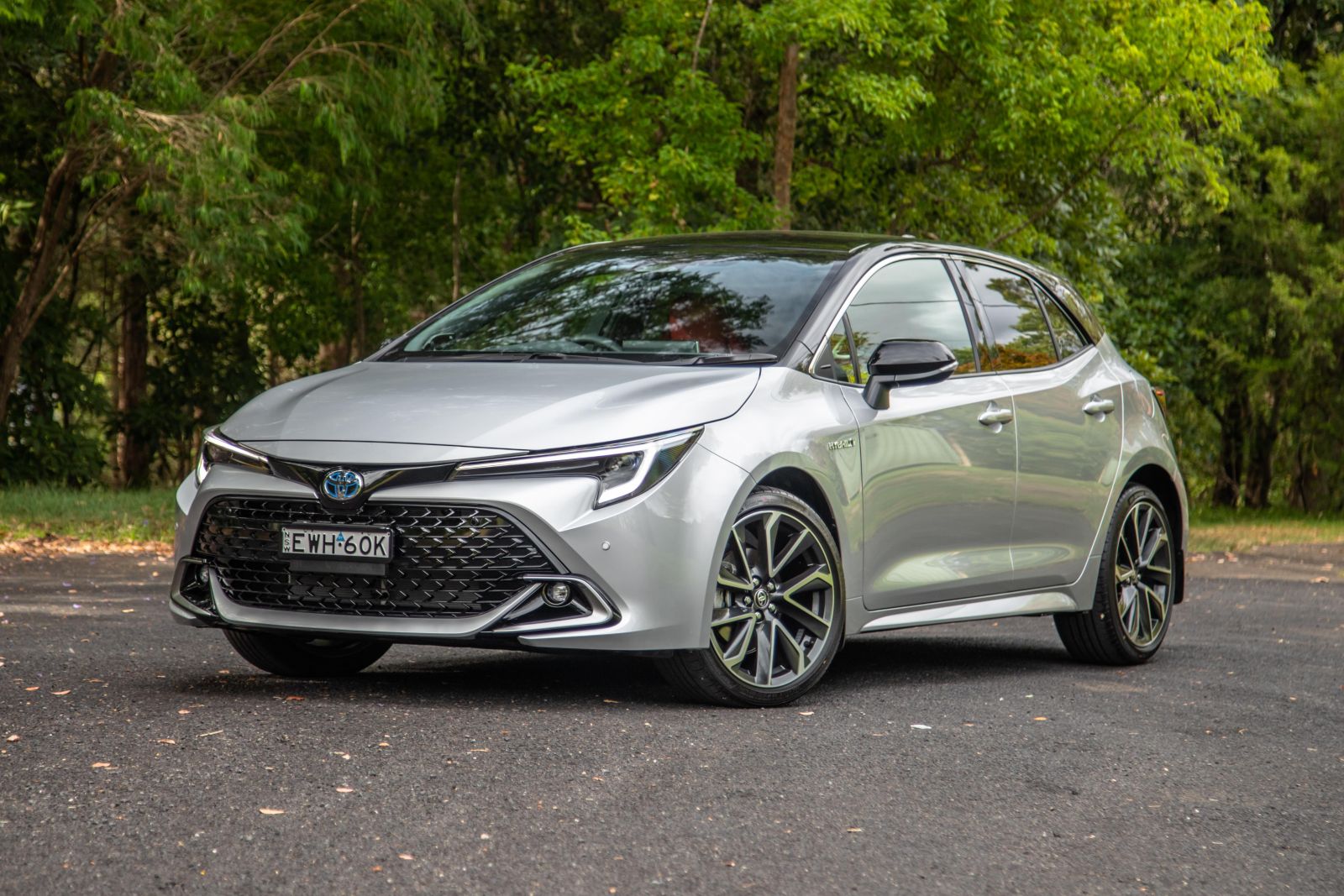The Toyota Corolla Hatch could well be an endangered species – at least if you subscribe to the notion that the future is going to see an even higher penetration of SUV sales.
With the bigger, more practically-packaged and family-friendlier Corolla Cross having just launched in Australia, the five-door hatchback version of the 2023 Toyota Corolla finds itself in a bit of an interesting position.
It is still one of the better hatchbacks to drive, has affordable hybrid powertrain tech available, is a good looking jigger, and it’s about to have its range crowned by the GR hot hatch.
But with serious packaging shortcomings in the back seat area and the boot, it’s only really going to appeal to certain buyers, and I’d argue those singles, couples, DINKs, and empty-nesters are very lucky buyers indeed.
How much does the Toyota Corolla Hatch ZR Hybrid cost?
The hybrid version of the ZR hatch tops the standard model range, priced from $37,620 plus on-road costs. That’s $2500 more than the petrol version, and a jump on the pre-updated version as well.
Is just under forty grand for a hatchback like this too expensive in 2023? I’d argue not, as many rivals – the Mazda 3, Kia Cerato and Hyundai i30, for instance – do their best work around this price point.
It’s only really the Skoda Scala hatch – which I think is the most underrated car in the country – that is better at a cheaper price point.
So if you’d bought the pre-update model ZR Hybrid, you’d have saved $2925. Good on you, if you did. But, there are some adjustments that have been made to the standard specifications of the Corolla hatch range that you’ll see detailed below.
What is the Toyota Corolla Hatch ZR Hybrid like on the inside?
It looks amazing, if you ask me – though I know some people won’t be massive on the whole “red and black trim on a silver car” look.
But for mine, this may as well have been rebadged as a GR Sport variant, because it feels special enough to score the Gazoo Racing badges and fanfare – wait til we get to the power bump! More below.
Anyway, the red trim elements on the seats, centre console, and red stitching on the dash all make it look a bit extra, but the nitpicker in my wishes they’d done red stitching on the leather-lined steering wheel as well.
The black headlining won’t be a favourite of yours if you suffer from claustrophobia, as it does no favours to the cabin in terms of making it feel airy.
It really is a cocoon-like space – especially if you’re in the passenger front seat, which still doesn’t offer height adjustment. It is manually adjustable, too, and the electric-adjust driver’s seat still doesn’t score memory settings.
Other highlights for the ZR grade include the new 12.3-inch driver information screen or digital cluster, which is a huge step up from the 7.0-inch display in the lower-spec versions. It’s crisp, fast to load and easy to get to terms with, and I really found it added something special to the cabin, especially when you toggle through the drive modes.
It’s verging on a semi-premium vibe inside. Kind of Lexus F-Sport-like in that way; and much like many Lexus models, the cabin space is a bit tight. The dashboard eats into front passenger space, and taller occupants will find that they are cramped even with the driver’s seat set to its lowest position.
Another Lexus-like touch is the new skin on the infotainment system, which remains an 8.0-inch touchscreen and in this spec, includes sat nav.
The graphics are near-identical to, say, a Lexus NX, and it also has some of the silly quirks that car has, like having to do a deep dive to find the bass, treble and fader controls (Not in the Sound menu, silly! Why would they be?!)
You have to hit the Source icon – or navigate away from Apple CarPlay or Android Auto – then hit the three dots icon, and that’s where the sound menu lives. Silly.
In terms of storage, there are cupholders between the front seats, bottle holders in both doors, a compact glovebox, and a small storage cubby in front of the shifter, which is where the wireless phone charger lives. Just near that there are the seat heater buttons, which I triggered without fail every time I plonked my smartphone in the charge cradle.
There’s a single USB-C port hidden down there as well, and another in the covered centre console. That console section also houses rear-seat directional air vents, which is nice to see in a car like this – especially considering the sedan doesn’t have vents in the back at all?!
In front of the gear shifter, you’ll also find a couple of buttons – EV Mode, Drive Mode (Normal, Sport, Eco), and traction control off. There’s also an electronic park brake behind the shifter as well. Corolla ZR models score dual-zone climate control with an eco-mode, for those concerned about the fuel consumption knock-on from the A/C system.
In the back seat there is limited space for taller adults – with the driver’s seat set for my position (6’0” or 182cm), my knees were up against the seat in front. Likewise, headroom is tight (watch your noggin for ingress and egress, too) and toe room is limited as well.
Another thing that you will notice – especially if you are a parent – is that the doors of the Corolla don’t open very far. That means that fitting a child seat into the second row is a challenge.
The anchor points are all there – ISOFIX in the window seats and three top-tethers – but angling yourself in while fitting a capsule or booster seat can be a challenge.
There are two map pockets for the ZR, and a pair of bottle holsters on the doors. There is a centre armrest with cup holders as well, and both window seat riders get “Jesus” handles too.
The boot is a real talking point for the Corolla hatch line-up, and the ZR hybrid is the best you can get when it comes to cargo capacity. But at just 333 litres, it’s hardly special in terms of the size – I could fit a folding pram and a couple of shopping bags, but that was about it.
At least the ZR Hybrid’s boot is significantly larger than all the other Corolla hatchbacks, which have a teeny tiny 217-litre hold.
The reason the petrol-electric ZR’s boot is so much bigger is that it gets a tyre repair kit in lieu of a spare wheel. The entry level Ascent Sport version of the Corolla hatch has a full-size spare wheel, while the other remaining versions have a space saver.
I don’t know about you, but I would much prefer having the inconvenience of a repair kit (which you might not even use, ever) and the ultimate convenience of a significantly larger boot capacity over a spare wheel, any day.
What’s under the bonnet?
You still get the choice of petrol or petrol-electric for the mainstream Corolla hatch range.
The hybrid version has seen some changes – it still uses a 1.8-litre naturally-aspirated four-cylinder petrol engine with an electric motor, but according to Toyota it has been reworked with a new high-output motor generator, revised power control unit and downsized hybrid transaxle.
That translates to “improved performance”, the brand says, and also a higher combined power output of 103kW, up 13kW over the previous version. There’s no combined torque figure stated.
It runs an e-CVT (electronic continuously variable transmission) and is front-wheel drive. Don’t want hybrid? I don’t understand why you’d think that way, but maybe the $2500 jump doesn’t make sense for you.
In that case, the lively 2.0-litre four-cylinder petrol engine with 126kW of power and 203Nm of torque is your go-to option. It has a CVT auto with 10-speed mode, and it’s FWD too.
How does the Toyota Corolla Hatch ZR Hybrid drive?
I still remember the event in Santa Barbara where Toyota launched this current-generation Corolla hatchback.
I was blown away by its dynamic nature and comfort, and it’s still – in my humble opinion – one of the best small hatches to drive for this kind of money.
It has terrific steering, which is nicely weighted and inherently predictable, and the chassis has a great balance to it – so even slow-speed driving around the ‘burbs can be fun.
Some of that, in the ZR’s case, comes down to the 18-inch alloy wheels with Dunlop SP Sport Maxx 225/40/18 rubber, which enamours it with plenty of grip.
It is really very easy to get to terms with this car, and it’s a breeze to park as well, with front and rear parking sensors and a reversing camera – though the camera only has fixed indicator lines, not those clever dynamic ones that change as your turn the wheel.
The hybrid powertrain won’t necessarily light the fires of enthusiasts, but it’s certainly punchy enough for most people’s needs, and you can feel a little more desperation and verve from the powertrain as a result of the recent power bump.
The way it dips in and out of EV mode is impressive – you’ll be coasting along (almost) silently at lower speeds, and you can feel it assisting the petrol engine when you give it the boot.
And also, kudos to Toyota for making the brake pedal feel ‘normal’ in its hybrid models these days. It’s strong in its response and feels natural underfoot.
The biggest downside for this grade is the fact it’s really loud inside. Sure, you’ve got an eight-speaker JBL sound system to drown out the road noise, but golly, you might go deaf either way.
What do you get?
Here’s rundown of the entire Corolla hatchback range to help you decide which spec is your sweet spot.
Corolla Ascent Sport highlights:
- 8.0-inch touchscreen infotainment system
- Wireless Android Auto and Apple CarPlay (NEW)
- DAB+ digital radio (NEW)
- USB-C port (NEW)
- 7.0-inch instrument cluster screen (NEW)
- Satellite navigation
- Six-speaker sound system
- Automatic bi-LED headlights
- Automatic high-beam
- LED daytime running lights and tail lights
- Air-conditioning
- 16-inch alloy wheels
- 60/40 split-fold rear seats with centre armrest
- Heated, power-folding mirrors
Ascent Sport $1000 Convenience Pack adds:
- Front and rear parking sensors
- Rear-cross traffic alert
Corolla SX adds:
- Rain-sensing wipers (NEW)
- Electrochromatic rear-view mirror (NEW)
- Remote climate control pre-conditioning (NEW)
- Front and rear parking sensors (NEW)
- Satellite navigation
- DAB+ digital radio
- Blind-spot monitoring
- Rear cross-traffic alert
- Leatherette-wrapped steering wheel and shifter
- LED fog lights
- Auto-folding wing mirrors
- Keyless entry and start
- Privacy glass
- Dual-zone climate control (Hatch)
- Wireless phone charging
- Paddle shifters (excl. Hybrid)
Corolla ZR (as tested) adds:
- 18-inch alloy wheels
- JBL sound system (8 speakers for Hatch)
- Front sports seats
- 8-way power driver’s seat
- Leather and faux suede upholstery
- Heated front seats
- Head-up display
- 12.3-inch digital instrument cluster (NEW)
- Auto-dimming rear view mirror
- Ambient lighting
Name your pick of the range in the comments section below!
Is the Toyota Corolla Hatch ZR Hybrid safe?
I have a pet peeve with brands asking buyers to spend more to have added safety gear – richer people aren’t worth more to society, right?
So, it annoys me even more when a brand puts prices up across the range but still makes safety tech optional, as is the case with the Corolla Hatch which still asks base-model buyers to spend an additional $1000 for front and rear parking sensors and rear cross-traffic alert – both of which have the potential to be life-saving items.
That gripe aside, the Corolla range is largely well specified for safety gear. The brand claims the Corolla’s autonomous emergency braking (AEB) system has been upgraded to cover motorcycle detection and junction assist, the latter will jam on the brakes if it thinks you won’t make a gap in traffic.
Corolla models now also have emergency steering assist, which will adjust your line if it thinks you won’t. Plus the brand’s Lane Trace Assist active lane-centring tech now features an emergency stop feature that can bring the car to a standstill if no driver inputs are detected.
The adaptive cruise control system has seen a couple of tweaks (four distance settings, deceleration assist), and Toyota says it can now detect vehicles earlier. Plus unlike some other Toyotas, the speed doesn’t get away from you when adaptive cruise control is on.
Don’t expect an updated ANCAP crash test score for the Corolla; it scored a five-star safety rating against 2018 criteria for all hatchback variants, and that rating will probably see out this generation of Corolla Hatch (rating expires December 2024).
How much does the Toyota Corolla Hatch ZR Hybrid cost to run?
From an ownership perspective the 2023 Toyota Corolla is covered by a five-year/unlimited-kilometre warranty, which can extend out to seven years for the powertrain if you maintain logbook servicing.
And if you buy a hybrid and get the car checked annually at a Toyota dealership, you’ll get up to 10 years hybrid battery warranty included – the company will do a battery health check at each service.
Servicing is due every 12 months or 15,000km, whichever comes first, with the first five services capped at $205 each. That’s cheap as. Roadside assist is not included so you’ll need to spend extra for that.
The official combined cycle fuel consumption figure for the hybrid hatchback – no matter which version you choose – is just 4.0L per 100km.
I couldn’t quite manage a score that low during my week with the car (it was 30 degrees Celsius all week, and I didn’t use the ECO A/C mode). But the return I saw was a still-good 5.1L/100km.
Want the petrol hatch? Be prepared for it to use 50 per cent more fuel!
At least on the official figures, that is, because the hatch has a claimed number of 6.0L/100km. I’d be banking on closer to 8.0L/100km, based on my own experience in the petrol hatch in years gone by.
As with the Corolla Sedan, the fuel tank capacity for the Corolla hatch is 43 litres for hybrid models and 50 litres for petrol-only.
CarExpert’s Take on the Toyota Corolla Hatch ZR Hybrid
If you think the Corolla hatch can work for your lifestyle, you could do a lot worse.
Rear-seat space and boot capacity removed from the equation, it really is a great all-rounder, and the ZR Hybrid version is a good bit of fun, too.
Personally I’d still be looking for something a bit more practical with this kind of footprint – like that under-appreciated Skoda Scala, for instance.
And, if I needed a practical family-friendly Corolla, I’d buy the Corolla Cross SUV, or even the sedan.
Maybe I was too early to sound the ‘endangered species’ alert for the Corolla Hatch. Time will tell.
Click the images for the full gallery
MORE: Everything Toyota Corolla



